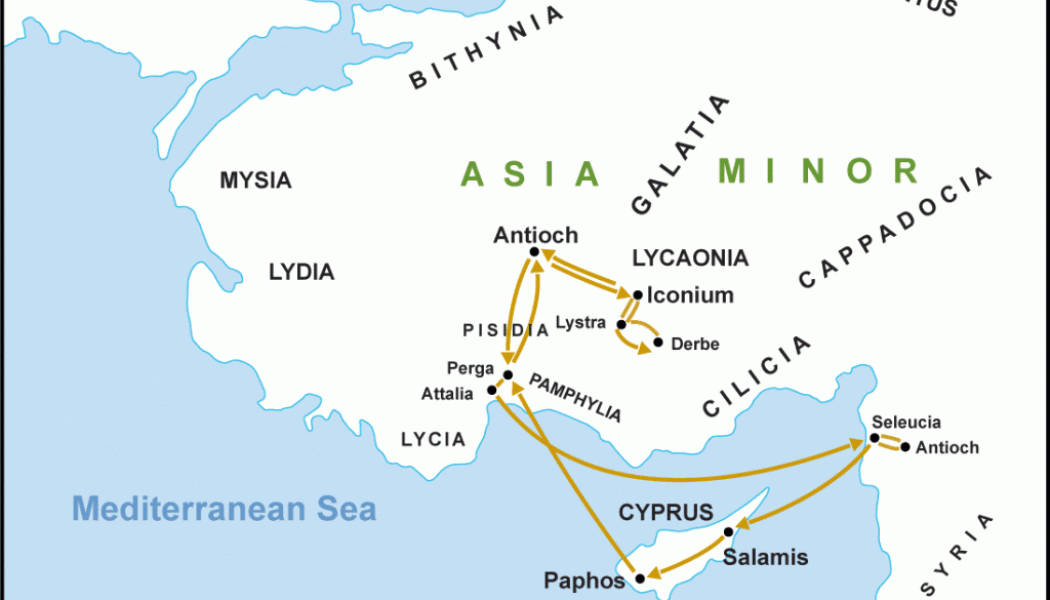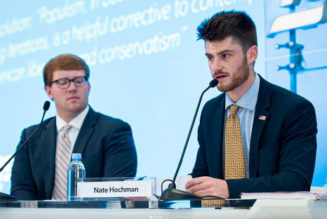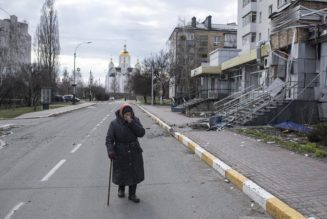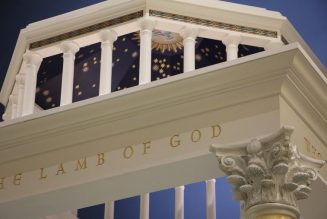This post is dedicated to the people of Turkey and Syria suffering due to the destruction and death caused by the 6 February 2023 earthquakes. Through the intercession of St. Paul, St. Timothy, the Cappadocian Fathers, St. Simeon Stylites, and all the other Heroes and Martyrs of our Faith who called Turkey and Syria their home, we ask our Lord Jesus Christ to grant those suffering His peace and strength during this terrible time. Amen.
Note from the Author: Copy/paste GPS Coordinates listed below into Google Maps to see or travel to each location.
Father J. and I set out early from Iconium (Konya) to the next stop on St. Paul’s First Missionary Journey: Lystra, the home of St. Timothy. (GPS Coordinates: 37°36’5.08″N, 32°20’19.93″E)

The letters to Timothy in the Bible were written by St. Paul to St. Timothy of Lystra. Timothy’s pious mother, Eunice, was a Jew who had converted to Christianity and his father was a Greek pagan. St. Timothy became one of St. Paul’s most dedicated disciples who followed him on his journeys. St. Timothy later became the bishop of Ephesus (also in what is today Turkey) and was martyred. His remains were for a time kept in Ephesus, then translated to Constantinople (Istanbul), and then finally brought to Termoli, Italy by the Crusaders. I had the opportunity to visit Termoli’s Cathedral (GPS Coordinates: 42° 0’18.98″N, 14°59’50.02″E) in 2016 and had the opportunity to visit St. Timothy there (see photo below).

St. Paul’s first visit to Lystra was met with mixed success (See Acts 14). When St. Barnabas and St. Paul arrived at the city, St. Paul healed a crippled man through God’s grace but, after seeing this, the inhabitants of the city believed that St. Barnabas and St. Paul were Greek gods and even brought out bulls in an effort to sacrifice to them! The Saints restrained them from doing so. Shortly after this, however, some of St. Paul’s enemies from Antioch in Pisidia and Iconium traveled to Lystra and turned the people against Paul. Acts tells us the people stoned Paul and dragged him out of Lystra, leaving him for dead. But–like a boss–Paul got back up and went back into Lystra! The next day, Paul–after being stoned–started walking to his next destination, Derbe, 59 miles away!
Unfortunately, Lystra is one of two Biblical cities in Turkey that has NOT been excavated by archaeologists (the other one being ancient Colossae–ref. St. Paul’s Letter to the Colossians). So, today, the site of the ancient city is a large tumulus, no doubt filled with plentiful artifacts from its long past. I hope someday in our lifetime archeologists will begin to unearth this historic city.

It was a lovely, sunny, crisp morning when we arrived at ancient Lystra. The mound covering the remains of the ancient city is in a beautiful river valley.


We set out to hike to the top to look for archaeological remains and to see the view. As is the case with tumuli covering ancient cities, shards of ancient pottery were scattered across the ground indicating the area once had been populated by a settlement. As we made our way up the mound we found a few stones that were “dressed” (i.e. carved into blocks) that were once part of ancient structures, however we didn’t see many and none with any classical-style artistry that the Greeks and Romans are known for.

Curiously, we saw a pile of smaller stones (see below) near the base of the tumulus. Could this have been the place where St. Paul was stoned and dragged out of the city??? Probably not, but it was possible! It definitely helps you picture what it may have looked like.

We reached the top of the tumulus and took in the gorgeous view from the top (see below for a photo looking north from the top of the tumulus of Lystra).

As we came down the north side of the tumulus, we encountered our first dressed stone with some classical artistry–perhaps a stone from the roof of a temple or some government building.

Not far from here, however, we hit the jackpot! I was examining some of the larger stones at the foot of the tumulus and saw some upside down Latin script carved into one of the stones! I flipped the stone over and started to clean off the dirt and hardened mud that obscured the writing.

After using some elbow grease and most of my drinking water to clean off the stone, we were able to see it clearly (see below). It appears to have been a dedicatory monument or tombstone crowned with a sculpture of a recumbent lion or sphinx (notice the front legs). Thankfully, we had cell phone service and did some translating of the Latin that was still extant. It appears this monument was dedicated to the patron’s parents: Decmiae, “Matri”–Mother, and Modesto, “Patri”–Father… “D & M.” It was fascinating to have discovered something new that may not have been closely looked at for hundreds of years. We also reflected on who this family many have been and what their story was–what did they look like, when did they live, what were their occupations? All questions likely forever lost to mystery and history.

The area of Lystra was very rural and we saw a pack mule eating some grass near our rental car. I offered him a granola bar, but he recoiled–not appetizing to him, I guess…haha.

There was also a large herd of sheep grazing on the tumulus being watched by a shepherd (see below). Aside from the soft blowing breeze, the only other discernable sound we could hear was the ringing of all the sheep bells around their necks–a stark contrast to what must have been a bustling city in the time of St. Paul.

After exploring Lystra and asking Sts. Paul and Timothy to pray for us and our intentions, our next stop was St. Paul’s last stop on his first missionary journey: the frontier town of Derbe (GPS Coordinates: 37°20’56.55″N, 33°21’42.48″E). Even in Roman times, this town was off the beaten path, about 18 miles from the ancient highway which connected Iconium/Konya with the Cilician Gates. Derbe is unique among towns in the New Testament because it is the only one identified that accepted the Gospel without turmoil (see Acts 14:21).

As we approached Derbe, it became more and more obvious how isolated this little town was. Which made me wonder why and how the Holy Spirit had inspired St. Paul to come to this town. Did he hear it had a substantial Jewish population that could have been receptive to the Gospel? Furthermore, as I mentioned earlier, this was Paul’s last stop on his First Missionary Journey. Why was *this* his last stop? Clearly Derbe was even remote for St. Paul, which is saying a lot! To this point in Paul’s First Missionary Journey, he had traveled approximately 719 miles by boat and foot from his starting point with the Christian Community in the city of Antioch in Syria (a city with the same name, but different from Antioch in Pisidia)–but, according to Acts, Derbe was the place St. Paul decided to turn back around and head home. As we pulled up to the tumulus of Ancient Derbe, I couldn’t help but think of the scene from the movie Forrest Gump when he decides to stop running after 3 years, 2 months, 14 days, and 16 hours in the middle of a desert with his 50 or so followers and says “I’m pretty tired…I think I’ll go home now.”

The tumulus of Derbe was in the middle of an agricultural plain surrounded by mountains and hills far in the distance. It was cool to see the Turks in the local area were farming corn and it reminded me of home in the Midwest.

We parked at Derbe and began to walk up the tumulus of the ancient city.

Like at Lystra, ancient pottery shards covered the tumulus.

The views from the hill of Derbe were breathtaking and reminded me a lot of New Mexico!


At the top of the hill, we could see the foundations of some ancient buildings that had been excavated in the early 2010s (ref. https://www.biblicalarchaeology.org/daily/news/derbe-excavations-explore-pauline-site/ ; https://ferrelljenkins.blog/2014/05/14/excavations-at-derbe/). Unfortunately, it looks like the site had not been studied more in some time. There were no explanatory signs nor any additional details present at the site. Hopefully, more excavating and scholarship will be done in the future for Derbe.


Below is a photo from the tumulus of Derbe looking north. The road was probably from Roman times. I thought it looked very cool stretching all the way to the horizon.

After asking St. Paul to pray for us, meditating about him celebrating Mass in this very spot with the first Christians of Derbe, and thanking him for his incredible sacrifices and dedication to spreading the Gospel, we set off to our next destination: the incredible region of Cappadocia.
Cappadocia is mentioned in the second chapter of Acts. Jews from Cappadocia listened to the preaching of the Apostles in Jerusalem on Pentecost. Cappadocia is also a region rich in Christian history. Numerous Saints came from Cappadocia including two of the Church’s thirty-seven Doctors of the Church: St. Gregory of Nazianzus and St. Basil the Great. Cappadocia is also famous for its numerous chapels and monasteries carved directly into the soft volcanic tufa rock formations. In addition to all the spiritual beauty of Cappadocia, the physical beauty is shocking as well: flat grassy plains, numerous massive extinct volcanoes, and rock formations that make you feel like you’re on another planet.
The drive from Derbe into Cappadocia was a long one–about 3 hours–but the scenery made the time fly by. Below is one of the grand extinct volcanoes of Cappadocia, Hasandağı (in Greek times, “Mount Argos”, GPS Coordinates: 38° 7’38.97″N, 34° 9’56.02″E). This mountain was a part of the Byzantine beacon system (similar to the system used by Gondor in The Lord of the Rings: The Return of the King–the Beacon of Amon Dîn, called by Aragorn “the Beacons of Minas Tirith”) that could quickly alert Constantinople (340 miles away) of invasions during the Arab-Byzantine Wars.


The volcano was so vast that pictures don’t do it justice. You can still see the lava tracks carving their way approximately 3 miles down from the crater on top. Incredible.

After we got to the other side of Hasandağı/Mount Argos, we began our journey up into some of the more populated areas of Cappadocia. One of these is a town called Güzelyurt (GPS Coordinates: 38°16’37.91″N, 34°22’14.44″E), a Turskish name meaning “Beautiful View.” In ancient times, it was likely the site of a settlement known as Karbala.
It was here where this village stands that the Cappadocian Father and Doctor of the Church, St. Gregory of Nazianzus, was born in about A.D. 329 and also died in A.D. 390. One can see from my photo below why Gregory’s family would have wanted to have an estate here–one of the most beautiful places I have ever been to.

St. Gregory grew up in this area, studied rhetoric in Athens with his friend St. Basil the Great of Caesarea Mazaca (modern day Kayseri, Turkey), came back home, and became a priest. Gregory’s father, Gregory the Elder, was bishop of the diocese of Nazianzus–a town close to his family’s estate at Karbala/Güzelyurt–and sought Gregory’s help running his diocese. Gregory assisted his father while simultaneously preaching against Arianism (a heresy which held Jesus was not God but a superhuman) and paganism which threatened the Church from the inside and out, respectively. Gregory assumed role as coadjutor of the Diocese of Nazianzus when his father became too ill to effectively lead.
In A.D. 379, the church leaders of Antioch in Syria asked Gregory to go to Constantinople to lead a theological campaign to reconquer the city from Arianism, and convert it back to Nicene Orthodoxy–the faith Catholic and Orthodox Christians believe today and profess at Sunday Mass during our recitation of the Nicene Creed. St. Gregory gained a reputation in the capital of Eastern Rome as an excellent orator and defender of the faith codified in the Nicene Creed. He was eventually made Archbishop of Constantinople despite being attacked during Mass by an Arian mob, which wounded him and killed another bishop.
To address the turmoil within the Church, it was St. Gregory and the Emperor Theodosius who convened the Second Ecumenical Council: The First Council of Constantinople in A.D. 381. Opponents of Gregory at the council sought to undermine him and said his appointment as Archbishop of Constantinople was illegitimate. Concerned that he was losing the confidence of the bishops and emperor, and that he was distracting from the work of the council, Gregory submitted his resignation as archbishop to the emperor who commended Gregory’s efforts. St. Gregory then returned to Nazianzus in Cappadocia and served as bishop until A.D. 383 when he retired and spent the last six years of his life in solitude at his family’s estate at Karbala/Güzelyurt.
After taking in the stunning view of St. Gregory of Nazianzus’s hometown in the Fall, we drove to our next stop: the famous Kizil Kilise or “Red Church” (GPS Coordinates: 38°15’35.39″N, 34°25’42.65″E).
A unique church among the numerous ruined churches dotting the region of Cappadocia, the Red Church–also known as the Church of St. Panteleimon–was built in early 6th Century from red volcanic stone blocks that make it stand out against the tan landscape around it. I can only imagine what it must have looked like 1,500 years ago when the first Christians came through its doors to celebrate the Eucharist…I’m sure it must have been even more striking.

This church has a single nave and one aisle on the north side of the church. It is thought the north aisle may have extended forward toward a reliquary containing the remains of a Saint so pilgrims could visit the Saint’s earthly remains and ask for their prayers to our Lord.
(Note: Catholic and Orthodox Christians honor and love the Saints to show our ultimate love for the one God–worship and adoration belong only to Him. This is similar to how married couples typically show honor, respect, and love to the family members and close friends of their spouse. A wife, for example, has a special love for her husband above everyone else (similar to how the Church loves her bridegroom, Christ), but she also shows a lesser–but still great–form of love and respect to the husband’s immediate family/friends (similar to how the Church loves and honors the Blessed Virgin Mary and the Saints). Showing great care (i.e. veneration, not worship) of Saints’ earthly remains to bring us closer to God is a tradition of the Christian faith since about A.D. 155 at the *latest*. According to the ancient account of the martyrdom of one of St. John the Apostle’s disciples, St. Polycarp, in approximately A.D. 155:
“For (Christ) indeed, as being the Son of God, we adore; but the martyrs, as disciples and followers of the Lord, we worthily love on account of their extraordinary affection towards their own King and Master, of whom may we also be made companions and fellow disciples!
…
The centurion (who oversaw St. Polycarp’s execution) then…placed the body [of Polycarp] in the midst of the fire, and consumed it. Accordingly, we (the Christians of Ancient Smyrna) afterwards took up his bones, as being more precious than the most exquisite jewels, and more purified than gold, and deposited them in a fitting place, whither (i.e. “where”), being gathered together, as opportunity is allowed us, with joy and rejoicing, the Lord shall grant us to celebrate the anniversary of his martyrdom, both in memory of those who have already finished their course, and for the exercising and preparation of those yet to walk in their steps.”
–From The Martyrdom of Polycarp, https://www.newadvent.org/fathers/0102.htm)

Some scholars believe the remains of St. Gregory of Nazianzus were interred in this church (which is very close to Karbala and Nazianzus) before they were moved to Constantinople, and then to St. Peter’s Basilica in Rome. In addition to the inclusion of the single aisle in the design of the church, numerous ancient crosses etched into the Church’s exterior walls (see photos below) indicate this place was a place of pilgrimage. Christians would often carve a cross into a holy structure as a means of showing they had been there on pilgrimage.


We were also able to celebrate Mass here. We were excited to celebrate Mass inside a church that had been standing for 1,500 years. I wonder what the first Mass celebrated here looked and sounded like? And the last Mass before the church fell into ruin? Through the miracle of the Mass, Father was going to bring Jesus back here–body, blood, soul, and divinity. Our voices would be one with the men and women who had stood in this very place over the last 1,500 years glorifying our God.
The only problem with celebrating Mass here was…there was no altar! Sadly, the church’s altar had been torn down. Since the early years of Christianity, altars have been an essential part of every church because it is where Jesus’s sacrifice on Calvary was re-presented to the Father through the Mass. To offer a sacrifice, you needed an altar. We decided to “call an audible” and go with what Moses and Elijah did in the Bible: find 12 (unfinished) stones, representing the 12 Tribes of Israel, and construct our own altar (see Exodus 20:25 & 24:4, 1 Kings 18:30-32). Luckily, there were some longer, somewhat flat stones not far away! We ended up using 13 total stones to build our altar: 12 in honor of the Twelve Apostles and 1 in honor of the Apostle to the Gentiles, one of our patrons on our pilgrimage: St. Paul. Additionally, 10 years ago, I bought an icon of St. Gregory of Nazianzus. As this Mass was to take place in a church that likely once held his relics, and was in his home region of Cappadocia, we placed the icon on the altar for our Mass. Below is a photo of our altar, built on the same spot the original altar of the church would have stood. It was amazing to think of all the Masses that had taken place in the exact same spot.

Father vested and began the Mass. There have only been a few times in my life that I’ve attended Mass with only me in the congregation–it is a unique and special experience, and this Mass was all the more so. Although it was a bright day, a cool breeze was blowing through the ruins of the ancient church and we were in the shade, but the cold was all relatively easy to overlook because of what we were doing.
The dome which had covered the apse of the church had collapsed and it appeared symbolically as if there was now an opening for our praise and the sacrifice of the Mass to travel directly up to heaven (see below).

Above Father and the altar, you could also see the remains of ancient frescoes still resolutely clinging to the church. You can still see the halos of Saints represented in the frescoes in the photo below.

After Mass, we made the decision to keep our altar standing and did not put the stones back where we found them. Our hope was, someday, if we were ever to come back, that our altar (below, from the rear window of the church) would still be standing–probably not, but we could always hope!

After finishing with our time at the Red Church, we drove to our next stop: THE site of the Ancient Town of Nazianzus where St. Gregory of Nazianzus ministered and was bishop. Today, the site of the ancient town of Nazianzus is…you guessed it…a tumulus! (GPS Coordinates: 38°23’35.13″N, 34°23’4.84″E) Coming to this place was an important goal for me. Before leaving Turkey in 2012, I took a trip into Cappadocia searching for this place. Unfortunately, the guidebook I was using said it was to the east of the town of Bekarlar, but I later found out after emailing the author, that this was a typo in his book, and it was actually supposed to be *west* of the town! After 10 years, I was finally back and excited to see the actual place I had missed 10 years ago–the diocese of my special patron, St. Gregory of Nazianzus. It was incredible to finally be where the ancient town of Nazianzus stood–the town where St. Gregory had his cathedral at which he ministered to his flock. The tumulus (below) was in an agricultural plain, and when we arrived, a tractor was actually tilling the tumulus itself!

As we walked to the top of the tumulus, we of course saw shards of pottery, and some finished stone blocks, but few–the site had been very picked over. Many ancient cities in Turkey have had their stone blocks taken by locals and re-used to build homes or walls. There was lots of volcanic rock there, especially black pumice stone (also known as basalt). I was even able to find an ancient pottery shard that had basalt ground into the clay used to make it before it was painted red (below).

There was some kind of concrete stand (not ancient) on the top of the tumulus. I pulled out my icon of St. Gregory–he was back home!…haha–and got some pictures of him at Nazianzus.

This icon of St. Gregory has been to St. Gregory’s tomb in St. Peter’s Basilica, Rome and touched to his reliquary at the Phanar (the “Vatican” of the Greek Orthodox Church) in Istanbul. (see photos below)



I’m pretty certain the locals farming the land over the site of Nazianzus would be pretty surprised to hear that a local “dignitary” (i.e. bishop) who used to live where they are farming is now entombed with honor inside the church below… 

St. Gregory of Nazianzus, pray for us!

Next to the tumulus of Nazianzus is an ancient octagonal tomb built for a local Turkish leader. The views of this tomb and the landscape as the setting sunshine spread across them made for some breathtaking views…

Below, the tomb with the tumulus mound of Nazianzus slightly back and to the right.

You could still see Hasandağı/Mount Argos in the distance from Nazianzus…

Although we were in Turkey and not the United States, the term “purple mountain majesties” gained new meaning for me as I looked at Mount Argos in the distance after the sun set. That mountain was PURPLE! Beautiful!

The Turkish tomb

After exploring Nazianzus and asking St. Gregory to pray for us, we headed out to where we would be staying the night: the picturesque town of Goreme in Cappadocia (GPS Coordinates: 38°38’35.65″N, 34°49’45.59″E). Goreme is one of the major tourist attractions in Turkey and is known for its amazing volcanic rock formations, known as “fairy chimneys.” Volcanic eruptions long ago blanketed the area in thick ash, which over hundreds of years solidified into a soft rock called “tuff.” Because the rock is so soft, it was easy for people throughout history here to carve homes, monasteries, and even cities(!) into the rock. Some of the hotels in Goreme are known as “cave hotels” because they have rooms carved into the rock itself; despite this, however, they still have all the amenities of a modern hotel like running water, heat, electricity, TV, etc. Some of the nicest hotels I’ve been to have been in Cappadocia. Below is a picture of a large fairy chimney outside our cave hotel, and the photo after that is the a picture of the atrium of our cave hotel.


Father and I were hungry and hadn’t gotten dinner yet, so we asked the front desk for a recommendation. He sent us to “Bull Brothers Restaurant” for some traditional Turkish cuisine. It did not disappoint…


The locals in Goreme do a fantastic job complimenting the natural beauty of the region by making their town beautiful as well. Below are some of the lovely nighttime sights I saw on the walk back to the hotel after dinner.




Now that we were finally back at our hotel after a long day of traveling, we settled in and got some sleep. It had been another epic day and we were excited for what tomorrow would bring us–our last full day of pilgrimage…
Stay tuned for my post next week as I recount Father and my travels to the breathtaking Goreme Cave Monasteries, to Kayseri–the home of St. Basil the Great, to Sivas–the city where St. Blaise (patron of ailments of the throat) was bishop and martyred, to Akbelen–the small town where St. John Chrysostom died from exhaustion when being brutally led into exile by Byzantine troops, and to the site of the famous Battle of Zela where Julius Caesar wrote the immortal words “Veni, Vidi, Vici…I came, I saw, I conquered” in 47 B.C. Thanks for reading and see you next week!
If you enjoyed, this post, check out my one-of-a-kind book, The Second Person of the Trinity in Time and Space: What is Known Historically About Jesus and the Holy Sites of the New Testament, sold on Amazon.com! (see below)
.wordads-ad-wrapper {display:none;font: normal 11px Arial, sans-serif;letter-spacing: 1px;text-decoration: none;width: 100%;margin: 25px auto;padding: 0;}.wordads-ad-title {margin-bottom: 5px;}.wordads-ad-controls {margin-top: 5px;text-align: right;}.wordads-ad-controls span {cursor: pointer;}.wordads-ad {width: fit-content;margin: 0 auto;}









